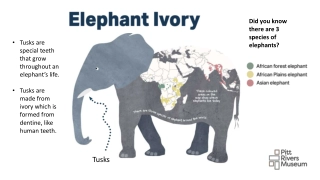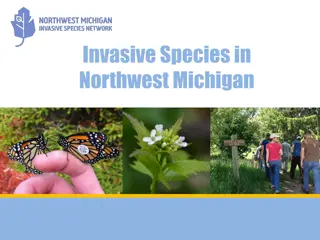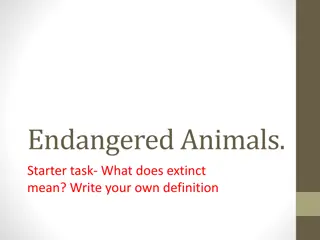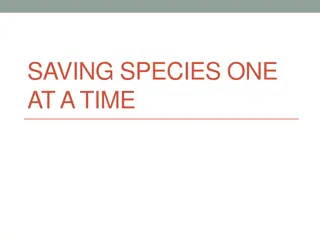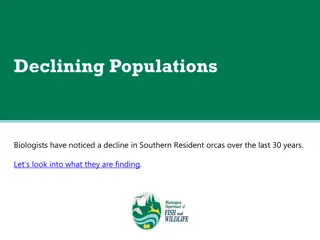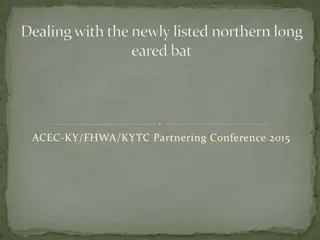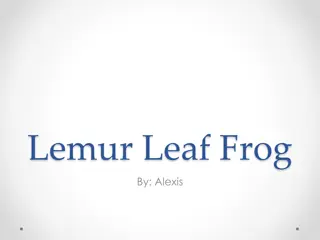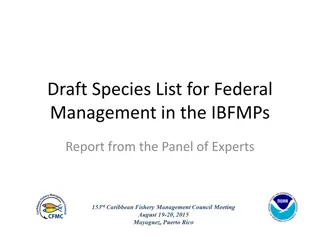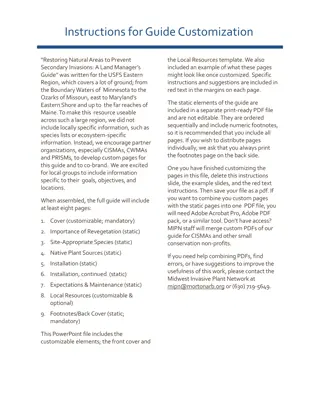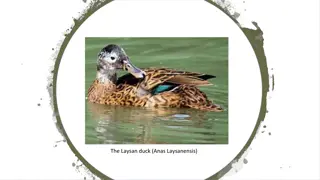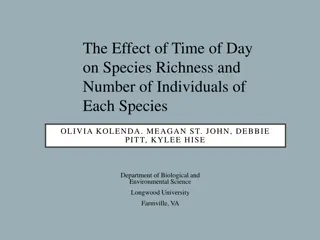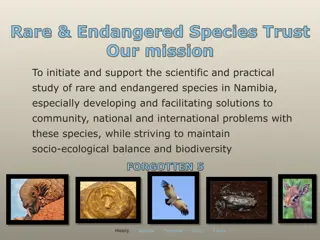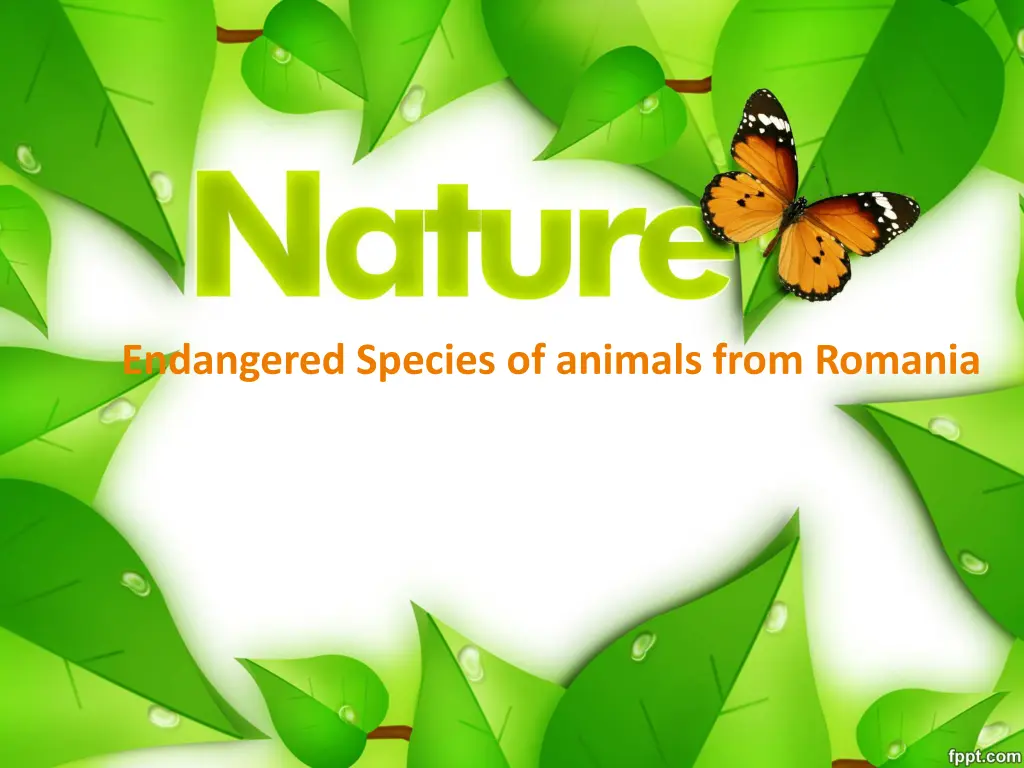
Endangered Species of Animals and Plants in Romania
Discover the endangered species of animals and plants in Romania, including the Blotched Snake, European Sturgeon, Russian Mink, Edelweiss, and Rhododendron. Learn about the conservation efforts and challenges they face in their natural habitats.
Download Presentation

Please find below an Image/Link to download the presentation.
The content on the website is provided AS IS for your information and personal use only. It may not be sold, licensed, or shared on other websites without obtaining consent from the author. If you encounter any issues during the download, it is possible that the publisher has removed the file from their server.
You are allowed to download the files provided on this website for personal or commercial use, subject to the condition that they are used lawfully. All files are the property of their respective owners.
The content on the website is provided AS IS for your information and personal use only. It may not be sold, licensed, or shared on other websites without obtaining consent from the author.
E N D
Presentation Transcript
The Blotched Snake (Elaphe sauromates) it is the biggest snake in Romania it has always been a rare species in our country some outstanding specimens of 2,5 m length have been discovered. this species has been included in the endangered species catalogue on the red list although highly protected and totally harmless it continues to be killed by the local inhabitants of Romania
The European Sturgeon(Huso huso) a 100 years ago there were specimens of 1 t weight at present there are only a few thousands of adult sturgeons left The Iron Gates Dam, The Danube s pollution, poaching and the overfishing led to this species to be an endangered one the sturgeon population cut down by 93% globally. In Romania, the commercial fishing was banned since 2006. The Romanian State spends millions of Euros for its restocking The Romanian Sturgeons represent the last wild stock in the Black Sea.
Russian Mink(Mustela lutreola) Its hunting together with the competition with the American mink that set free from mink-skin farms- contributed to the dwindling of this species In the past the Russian mink was widely spread At present, in Romania still live around 1.000 Russian minks ,in Danube Delta exclusively,- the last area of survival for the Russian mink ,except for Russia. Its poaching and downfall still continue.
Endangered species of plants in Romania The main causes of these species of plants dwindling are : their habitats destruction (the greatest threat for these species) the commercial exploitation (herbs collecting) The destructions generated by the foreign species brought to the country pollution.
Edelweiss, also called the Queens Flower (Leontopodium alpinum ) Image it grows in the Carpathian Mountains , on limestone rocks , in the alpine areas it has been classified as a natural monument since 1933 . in Romania this flower reaches about 20 cm height, while in other countries it can reach up to 50 80 cm. it blooms in July-August.
Rhododendron( Rhododendron kotschyi ) It is a plant with a Balcanic origin. it grows spontaneously in small shrubs in alpine areas of the Carpathians it grows in pretty special climatic and relief conditions its flowers give off a fragrance similar to the sour cherries it blooms at the end of June and at the beginning of July it is a perennial plant that maintains its leaves green all year round
The European Yellow Lady's Slipper (Cypripedium calceolus) it is a very rare species of orchid, which can be found in the woods, on hilltops, in bushes, preferably in limestone areas In Romania it has been protected since 1938, Being mercilessly picked up, it has disappeared from many areas of the country Today, it can still be seen in Bucegi, Ceahl u, F g ra and Retezat particularly The orchid blooms from July to September

